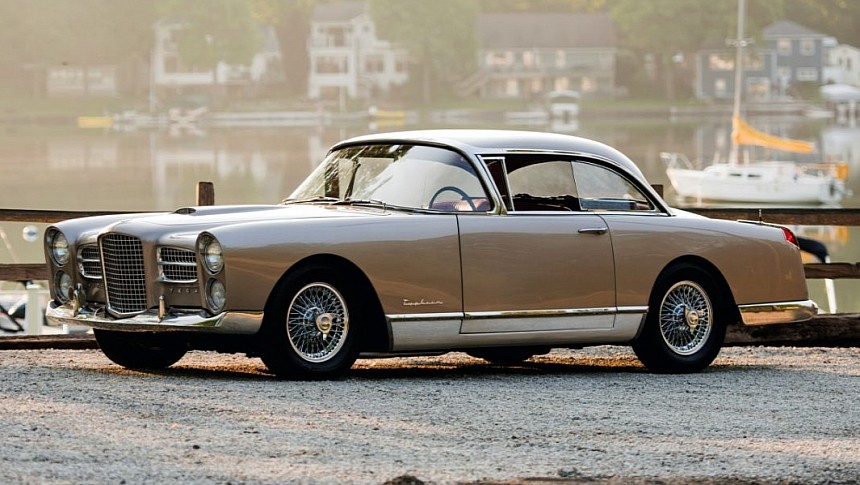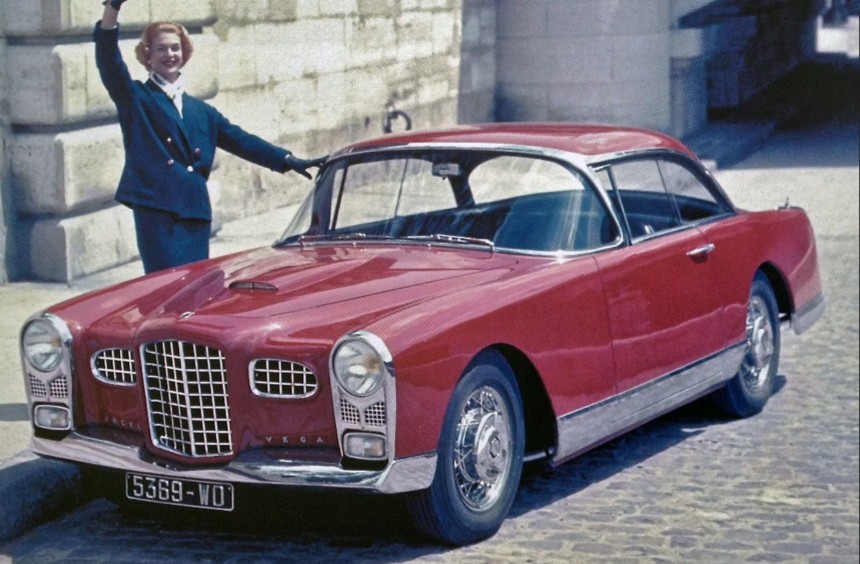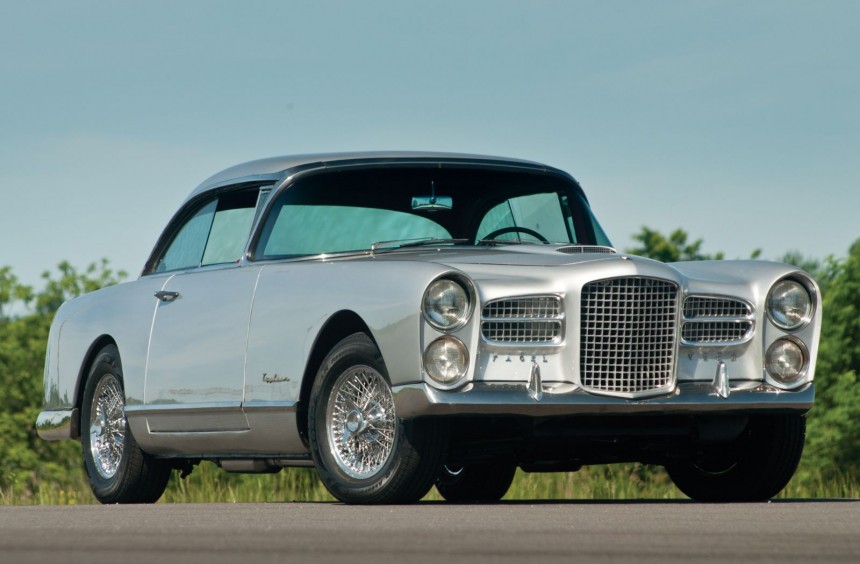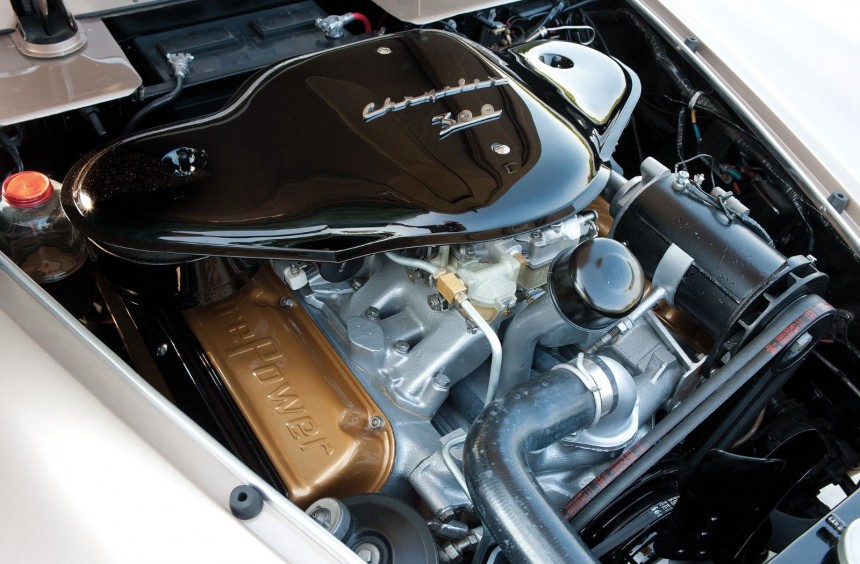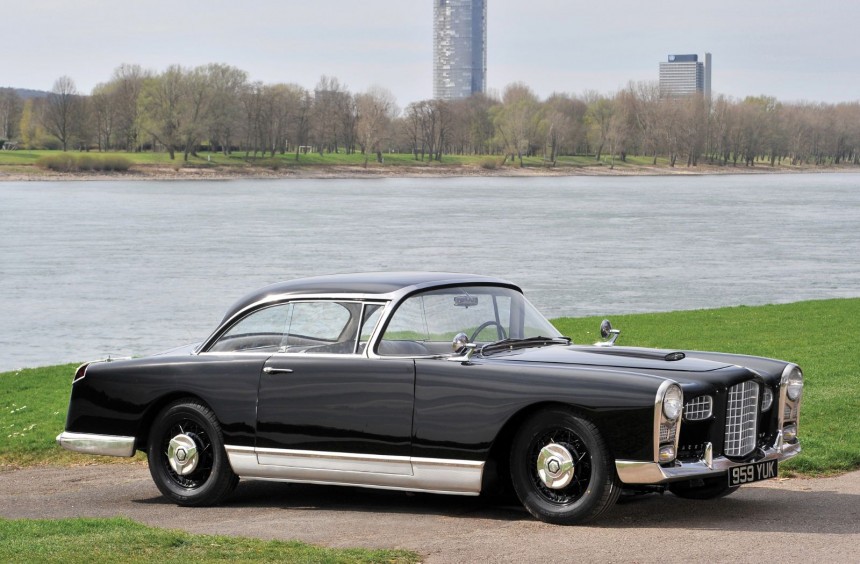Although few remember it today, the Facel Vega FVS was one of the most powerful and luxurious grand tourers of the 1950s, competing directly with similar models from Mercedes-Benz, Aston Martin, or Ferrari.
In the decade that followed the Second World War, the world looked much different than it does today. Nevertheless, society's super-rich still had a wide range of fascinating cars to choose from.
Since SUVs like the Rolls-Royce Cullinan, Lamborghini Urus, or Ferrari Purosangue were more than half of century away, those who wanted an ultra-exclusive luxury vehicle usually went for a high-performance grand tourer.
Models like the Mercedes-Benz 300SL "Gullwing," Aston Martin DB4, or Ferrari 250 Europa GT were among the top choices. But right at the top, among those iconic grand tourers, stood the Facel Vega FVS (later renamed HK500) - a beautifully-crafted, American-powered piece of automotive art from France.
Facel was founded in 1939 as a division of the French military aircraft manufacturer Bronzavia. Initially, it fabricated special components for various Bronzavia projects, but shortly after the Second World War ended, it partnered with a company called Metallonit, shifting its focus to building custom bodies for the automotive industry.
As a coachbuilder, Facel Vega hired automotive designer Jean Daninos, who previously worked with Citroën on the innovative Traction Avant, and started working with several carmakers like Bentley, Simica, Panhard, or Ford's French division.
In 1954, shortly after the partnership with Metallon ended, Daninos took over Facet and shifted the company's focus again. This time, Daninos pursued his ultimate dream of building a luxurious grand tourer, a car he had begun working on several years earlier.
A few months after the acquisition was officialized, the Facel Vega was unveiled at the Paris Auto Show. Based on American underpinnings but boasting an elegant body, the Vega and its subsequent variations (FVS/ HK500 and Facel II) became a hit among the world's elites during its ten-year production run.
Through the 1960s, Facel II would become the most famous member of the lineage, with celebrities like Pablo Picasso, Christian Dior, Anthony Quinn, Debbie Reynolds, Frank Sinatra, and Sir Stirling Moss all owning one, its sporty predecessor laid the foundation for its success.
After the initial production run of around 47 Facel Vegas (aka FV1), the model received several improvements in 1955. Though it continued to be marketed as the Facel Vega, the updated model became known as FV2 in Europe and FVS (Facel Vega Sport) in the United States.
Like the earlier version, it was built around a tubular frame chassis designed by former British racing driver Lance Macklin. The structure featured a suspension system with coil springs and double wishbones at the front, while at the rear, it employed a leaf-sprung live axle.
Constructed using several components sourced from the Chrysler Corporation, the chassis engineering was pretty straightforward, even for that era. Nevertheless, the elegant design and flawless built-quality of the bodywork made the FVS special.
In contrast to the FV1, the updated model came with a larger, wrap-around windshield that improved visibility and improved the grand tourer's overall looks.
Apart from its exterior design, wealthy buyers fell for the Facet Vega thanks to its ultra-luxurious interior. Everything was upholstered in the finest leather available and contrasted by immaculately-finished metal trims. The aircraft-inspired dashboard insert, also leather-upholstered in the previous FV1, was made of solid metal and hand-painted to resemble burled wood.
The FVS was manufactured until 1959, when it was rebranded HK500, then continued to be available until 1961. It was constantly upgraded throughout its lifespan, receiving subtle cosmetic improvements and larger engines. With each engine upgrade, the model name changed from FV2 to FV3, FV3B, and FV4, but colloquially, the car remained known as the FVS.
Since none of the French engines available at the time would live up to Daninos' expectations, and building one from scratch was never an option, the boss struck an exclusive partnership with the Chrysler Corporation.
The FV1 thus received a 180-hp, 276-ci (4.5-liter) DeSoto FireDome fist-generation HEMI linked to either a standard two-speed PowerFlite automatic or an optional our-speed Pont-à-Mousson manual. This engine was carried over to the FVS, albeit with several improvements that upped the output to 250 hp.
In 1956, power improved again to 285 hp as the car (FV2/FVS) received the new 330-ci (5.4-liter) FireDome mated to a three-speed TorqueFlite automatic.
From March 1957 to June 1958, several updated cars (FV3B) used a series of Plymouth V8s, but in 1958, the new FV4 (essentially a US-market FV3B) got the 354-ci (5.8-liter) Chrysler FirePower HEMI modified to make 325 hp. This engine was carried over to the HK500.
Around 35 FV4 chassis were also delivered with the rare 392-ci (6.4-liter) FirePower "Typhoon" HEMI borrowed from the Chrysler 300. When equipped with dual for-barrel carbs and an improved air induction system, it was rated at 355 hp.
In this configuration, the FVS was one of the quickest, most powerful grand tourers of the 1950s, outperforming icons like the Mercedes-Benz 300SL.
From 1955 to 1958, the French carmaker built a little over 310 units that sold for around $10,000 to $14,000, depending on the options. In today's money, that means about $103,000 to $144,000.
After it was rebranded to HK500, over 490 units were sold in three years, making it the best-selling iteration of the French grand tourer.
Surviving cars in Concours condition are rare and thus demand hefty figures. Depending on the model year and engine, a Facel Vega FVS can be worth well over $250,000 in today's collector's market.
For more information about this gorgeous car, we recommend the YouTube video below by Intergalactic Binman.
Since SUVs like the Rolls-Royce Cullinan, Lamborghini Urus, or Ferrari Purosangue were more than half of century away, those who wanted an ultra-exclusive luxury vehicle usually went for a high-performance grand tourer.
Models like the Mercedes-Benz 300SL "Gullwing," Aston Martin DB4, or Ferrari 250 Europa GT were among the top choices. But right at the top, among those iconic grand tourers, stood the Facel Vega FVS (later renamed HK500) - a beautifully-crafted, American-powered piece of automotive art from France.
A short history of the Facel Vega
As a coachbuilder, Facel Vega hired automotive designer Jean Daninos, who previously worked with Citroën on the innovative Traction Avant, and started working with several carmakers like Bentley, Simica, Panhard, or Ford's French division.
In 1954, shortly after the partnership with Metallon ended, Daninos took over Facet and shifted the company's focus again. This time, Daninos pursued his ultimate dream of building a luxurious grand tourer, a car he had begun working on several years earlier.
A few months after the acquisition was officialized, the Facel Vega was unveiled at the Paris Auto Show. Based on American underpinnings but boasting an elegant body, the Vega and its subsequent variations (FVS/ HK500 and Facel II) became a hit among the world's elites during its ten-year production run.
Through the 1960s, Facel II would become the most famous member of the lineage, with celebrities like Pablo Picasso, Christian Dior, Anthony Quinn, Debbie Reynolds, Frank Sinatra, and Sir Stirling Moss all owning one, its sporty predecessor laid the foundation for its success.
FVS: French elegance combined with American engineering
Like the earlier version, it was built around a tubular frame chassis designed by former British racing driver Lance Macklin. The structure featured a suspension system with coil springs and double wishbones at the front, while at the rear, it employed a leaf-sprung live axle.
Constructed using several components sourced from the Chrysler Corporation, the chassis engineering was pretty straightforward, even for that era. Nevertheless, the elegant design and flawless built-quality of the bodywork made the FVS special.
In contrast to the FV1, the updated model came with a larger, wrap-around windshield that improved visibility and improved the grand tourer's overall looks.
Apart from its exterior design, wealthy buyers fell for the Facet Vega thanks to its ultra-luxurious interior. Everything was upholstered in the finest leather available and contrasted by immaculately-finished metal trims. The aircraft-inspired dashboard insert, also leather-upholstered in the previous FV1, was made of solid metal and hand-painted to resemble burled wood.
The FVS was manufactured until 1959, when it was rebranded HK500, then continued to be available until 1961. It was constantly upgraded throughout its lifespan, receiving subtle cosmetic improvements and larger engines. With each engine upgrade, the model name changed from FV2 to FV3, FV3B, and FV4, but colloquially, the car remained known as the FVS.
Powered by a series of HEMI engines
The FV1 thus received a 180-hp, 276-ci (4.5-liter) DeSoto FireDome fist-generation HEMI linked to either a standard two-speed PowerFlite automatic or an optional our-speed Pont-à-Mousson manual. This engine was carried over to the FVS, albeit with several improvements that upped the output to 250 hp.
In 1956, power improved again to 285 hp as the car (FV2/FVS) received the new 330-ci (5.4-liter) FireDome mated to a three-speed TorqueFlite automatic.
From March 1957 to June 1958, several updated cars (FV3B) used a series of Plymouth V8s, but in 1958, the new FV4 (essentially a US-market FV3B) got the 354-ci (5.8-liter) Chrysler FirePower HEMI modified to make 325 hp. This engine was carried over to the HK500.
Around 35 FV4 chassis were also delivered with the rare 392-ci (6.4-liter) FirePower "Typhoon" HEMI borrowed from the Chrysler 300. When equipped with dual for-barrel carbs and an improved air induction system, it was rated at 355 hp.
In this configuration, the FVS was one of the quickest, most powerful grand tourers of the 1950s, outperforming icons like the Mercedes-Benz 300SL.
The Facel Vega FVS today
After it was rebranded to HK500, over 490 units were sold in three years, making it the best-selling iteration of the French grand tourer.
Surviving cars in Concours condition are rare and thus demand hefty figures. Depending on the model year and engine, a Facel Vega FVS can be worth well over $250,000 in today's collector's market.
For more information about this gorgeous car, we recommend the YouTube video below by Intergalactic Binman.
